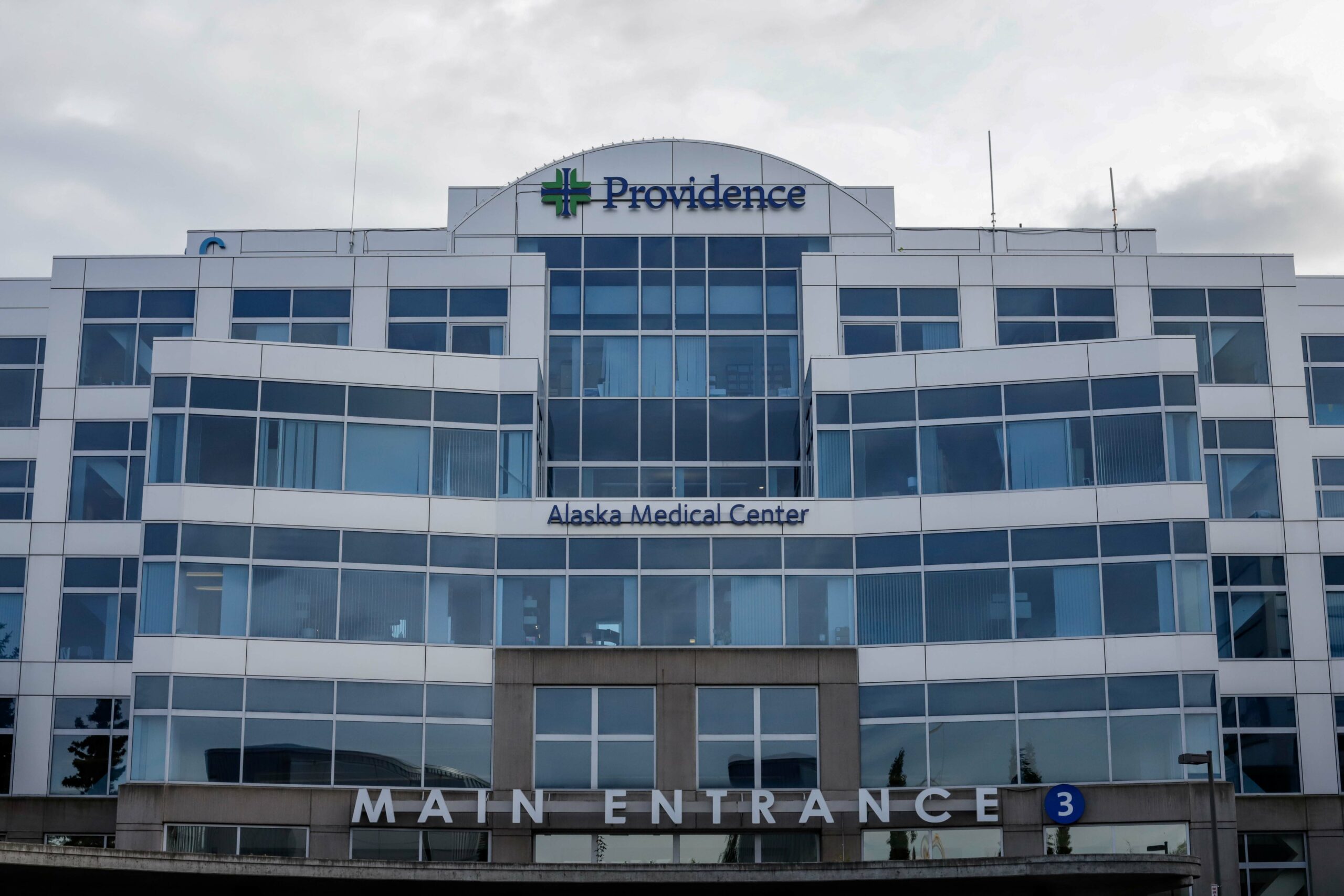
The nonprofit Providence hospital system, which includes Alaska’s largest hospital, aggressively pursued payment from needy patients who should’ve been eligible for free care.
That’s according to a New York Times investigation, which found that Providence, using guidance from a consulting firm called McKinsey & Company, trained its staff to pressure patients to pay their bills regardless of their income, rather than notifying them up front that they might be able to receive financial assistance.
And if they didn’t pay, the bills went to debt collectors.
New York Times reporter Jessica Silver-Greenberg wrote the story with her colleague Katie Thomas.
Silver-Greenberg says Providence avoids more than a billion dollars a year in taxes with its nonprofit status, and in exchange, it’s supposed to provide some level of what’s called “charity care.”
But, Silver-Greenberg says, for many patients, that’s not what happened.
Listen:
[Sign up for Alaska Public Media’s daily newsletter to get our top stories delivered to your inbox.]
The following transcript has been lightly edited for clarity.
Jessica Silver-Greenberg: Providence is supposed to post in all of its hospitals in Alaska — and this is a federal requirement, this is under the Affordable Care Act — they’re supposed to inform patients about the availability of financial assistance. They’re supposed to make it very clear and very easy to understand. In Alaska, their charity care policy says that anyone who makes under or at 200% of the federal poverty level should get free care. That’s their own financial assistance policy. But our reporting shows that they were not informing patients that they qualified for charity care. In fact, a lot of the training materials developed for them had the opposite effect. Those training materials obscured the availability of financial assistance.
Casey Grove: Yeah. And in your story, you talk about how there was this change at Providence towards this model where they’re sort of obscuring the fact that there is this option for the health care to be written off, for the bill to be written off. But what was that change? And I guess how high up in the management structure did that decision making go?
JSG: Right. So it went very high. The change that you’re describing happened in 2019. So previously, when Providence treated patients who are on Medicaid, they eventually waived any outstanding portion of that bill. So they would still put Medicaid patients through the billing cycle, but if none of those efforts yielded any payments, Providence would send those accounts through an Experian program, and Experian would spit out an analysis of whether those patients could afford to pay or whether they were qualified for charity care.
Providence in 2019, under the direction of the Chief Financial Officer, made this change where they stopped writing off the debts of Medicaid patients. And instead, they sent those Medicaid patients to debt collectors. And this is very important, because Providence, in its response to our story, they have been sending letters from their CFO and others at the very top of the organization that say the policy toward Medicaid patients was a mistake and that was it was a glitch in the system, and that they fixed it and stopped sending Medicaid patients to collections in December of 2021.
The thing that they are not saying, the piece of information that’s being left out of that, is that an executive in 2019, so in December of 2019, sent a warning, like raised a red flag to other Providence executives, warning them that the changes to how Medicaid patients were being treated were producing a lot of harm. So this executive said, and I think this is powerful, “I just want it made clear to our leadership that patients that would normally have been eligible for charity care are going to bad debt.” And by that she means they’re being sent to debt collectors. So that warning came in December of 2019. Providence didn’t fix the problem until December of 2021. So we’re looking at two years where Medicaid patients were being sent to get collectors.
CG: And in your reporting, didn’t you also find some, I guess, incentive or some intentionality on behalf of Providence in trying to generate more revenue, right?
JSG: Yes. So the program that they turned to McKinsey to create was called Rev-Up. And it, like its name suggests, was, according to our reporting, all about collecting more from patients, even those patients who should have qualified under Providence’s own policies, or more importantly, under state law, for charity care. So yeah, the Rev-Up program is kind of the centerpiece of this article, because, you know, in 2018, executives at Providence, were pretty frustrated with the amount of free care that they were providing to patients. And so they they set out to bring in more money from patients. And Rev-Up was their solution.
CG: So there’s this financial toll on patients who should have received charitable care. But then there’s the emotional toll, as well. And there was this really, I think fair to say, tragic story from Alaska included in that article about a woman that had a really difficult and painful experience with pregnancy. Can you tell me about that?
JSG: Yes. So in 2019, Vanessa Weller, who was working as a manager at a Wendy’s restaurant in Anchorage, went to Providence Alaska Medical Center. And she was 24 weeks pregnant at the time, and she was experiencing abdominal pains. And she told me in our interview, that she just kept repeating to herself, like, “Let this be cramps, let this be cramps, let this be cramps,” because, you know, it was very early, she was only 24 weeks pregnant. It was very, very early to be potentially going into labor. But, tragically, she was in labor. And she gave birth to a baby boy who barely weighed a pound. And she qualified for entirely free care. She’d also applied for Medicaid. And she was hoping that Medicaid would cover the bill.
And the baby that she had given birth to died after five days in the hospital. And when she was discharged, and went home and she’s grieving the loss of her son, these phone calls started from Providence. And she says she just remembers just this cold panic, because Providence employees told her that her bill was $125,000. So at the time, that was about four times what she made in a year. And she said that despite telling Providence employees who called that she could not afford the bill, no one offered her financial assistance. No one told her that she was eligible for charity care. No one told her she never should have received a bill.
Instead, they, according to her, pushed her to pay half the amount. And then on other calls, she was offered a payment plan, she said. And, you know, she said something that really struck me in our interview, she said it was like they were following some script, she said like robots. And to me, what was so gutting in some ways about that is that, you know, Providence employees had been given a script to collect money from patients. They’d been given lots of different scripts to approach patients with. And speaking about, I mean, Vanessa’s experience is, in some ways, very illustrative of how that change to the way Providence treated Medicaid patients had a real impact. Because we were able to obtain an email, it’s in Washington’s litigation with Providence, where an executive questioned why Vanessa Weller had this balance to begin with, given her low income and the fact that she was Medicaid eligible. And someone else, you know, on the executive level, replied that previously, before the 2019 change, that bill would have been forgiven.
Editor’s note: In a written statement provided to Alaska Public Media, Providence denied that it failed to communicate to patients that they might be eligible for charity care and said it has changed its practices around using debt collectors.
Casey Grove is host of Alaska News Nightly, a general assignment reporter and an editor at Alaska Public Media. Reach him atcgrove@alaskapublic.org. Read more about Caseyhere.





